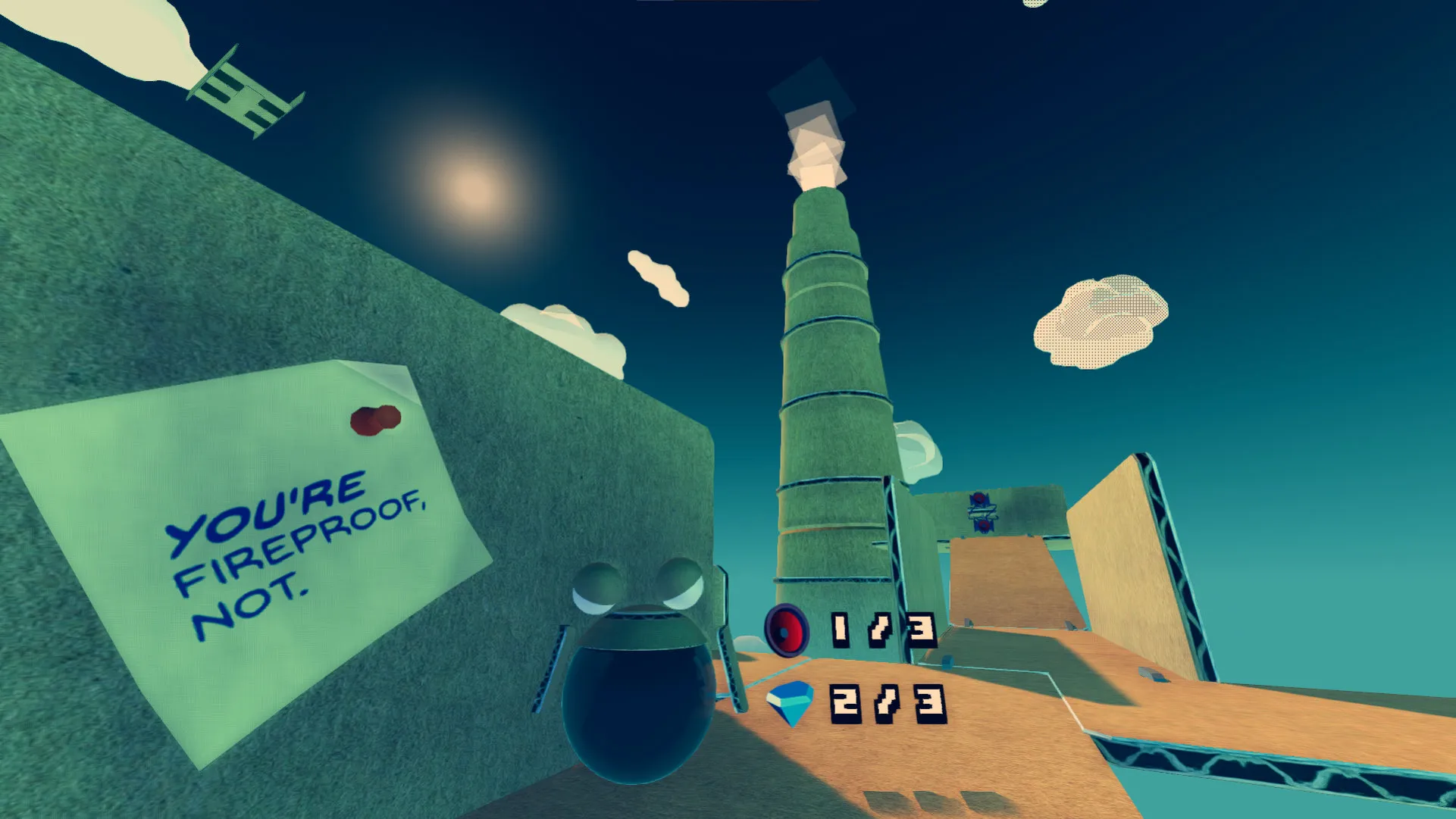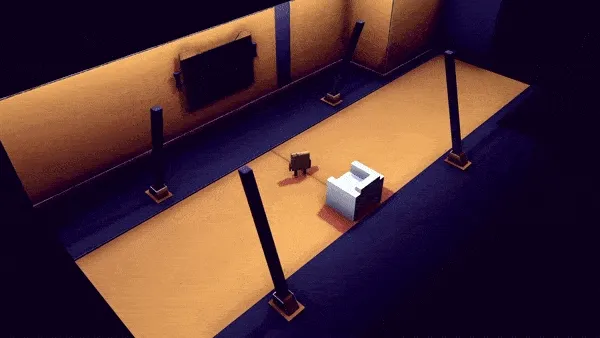Making of Cardbob - Cardboard as a texture?
The game puts you in the shoes of Cardbob. A hi-tech cardboard robot with access to a mysterious dungeon system in their basement. Where they collect items to later on sell to traders. You have to negotiate for the best price when selling the dungeon items to NPCs.
 Cardboard… Such an underrated material. People use it mostly for packaging, but there’s so much more to it. (I’m joking, of course. Do you remember the Google Cardboard project?)
Cardboard… Such an underrated material. People use it mostly for packaging, but there’s so much more to it. (I’m joking, of course. Do you remember the Google Cardboard project?)
The idea of using cardboard as the main texture in our game first came up during a brainstorming session for our next hypercasual mobile game. We hadn’t even made a prototype out of it, but I remember it being something like 3D origami made of cardboard. Not gonna lie, that was a few years ago, I don’t remember the details.
But that was just the seed of the idea; we had no idea where it would lead. The real breakthrough came during one of Krystof’s streams (my ex-colleague from Mad Cookies). At that time, we were primarily focused on outsourcing, but we also dedicated some of our free time to prototyping new concepts that could evolve into a full-blown project. Anyway, during a game jam (where most of our best ideas emerged) Krystof brainstormed the visuals for the game and mentioned the cardboard-y hypercasual game concept to his chat.
I’d like to put it this way: THE CHAT WENT CRAZY (myself included, as I watched many of his streams at that time).

The following Monday we had a company meeting about whatever was needed at that time, but most importantly, the (at least we thought so) potential gold mine we hit with the cardboard visuals.
A few brainstorming sessions later, Cardbob was born.
Why Godot?
Back then, the latest version of the Godot Engine was, I think, 3.4, and the number of popular games made with it was dangerously close to zero. So, naturally, when I mentioned we were using Godot to make Cardbob, I usually got one of two responses:
- Huh, cool. What’s Godot?
- Why not Unity?
Thanks to the Unity fiasco, many of you now know the answer to the first question, but the second one is a bit more specific. Like I mentioned earlier, we were deep into outsourcing at the time (either as freelancers or a whole studio), and we still had active projects that we couldn’t just abandon — our wallets wouldn’t allow it. So, since Krystof wasn’t needed full-time on other projects, he got to spearhead the Cardbob prototype while the rest of us wrapped up our projects.

Alright, that didn’t really answer the question. We were quite uncertain about the deadlines for our outsourcing projects, given their unpredictable nature (that’s a long story!). Because of this fact, we knew that following the traditional route of making a super quick prototype, scrapping it, and starting over properly just wouldn’t work in our favor. Also, Krystof isn’t a programmer by training; he’s a self-taught coder who started out as a solo developer and mainly a 3D artist before joining Mad Cookies. He wanted to make games and wasn’t a fan of Unity, so he picked up Godot.
And just like that, Godot it was. Well, it was a bit more than just that. As a developer myself, I understand the concepts and can switch frameworks with ease — I figured I could just pick up the engine-specific details on the fly while untangling our prototype’s spaghetti code.
January 1, 2022, marked the very first day of Cardbob’s development. A month later, I officially joined the team and started to refactor things. Surprisingly, it wasn’t that bad—both working with the engine and rewriting things proved to be fairly quick tasks.
Cardboard
Also, cardboard has proven itself to be not just an interesting material, but it has also significantly sped up development, by a lot. If you don’t believe me, consider this:
the game primarily uses just these two main textures:
 Also, not only was development accelerated, but the GPU hardly breaks a sweat during rendering. This efficiency is due to almost everything being batched, thanks to the limited use of materials and textures.
Also, not only was development accelerated, but the GPU hardly breaks a sweat during rendering. This efficiency is due to almost everything being batched, thanks to the limited use of materials and textures.